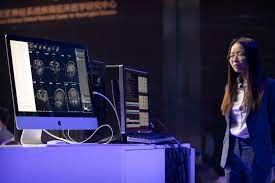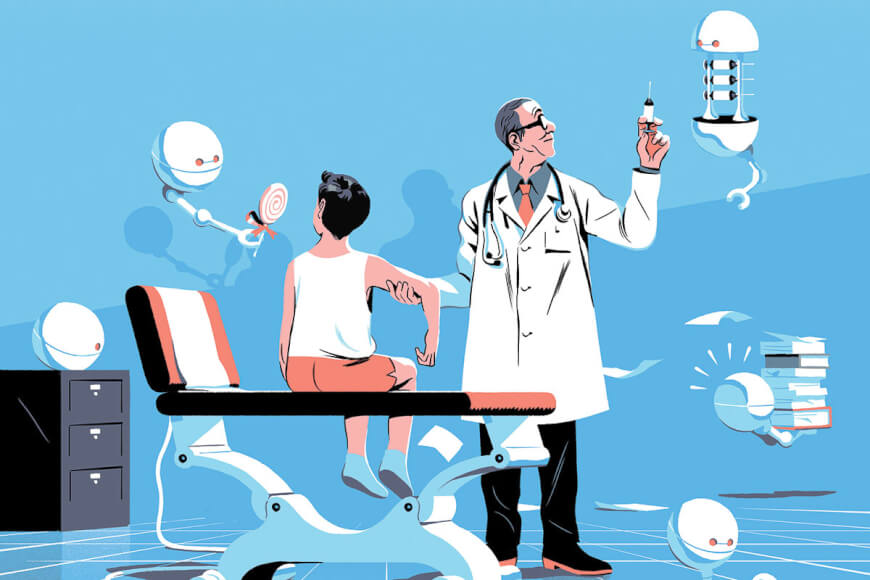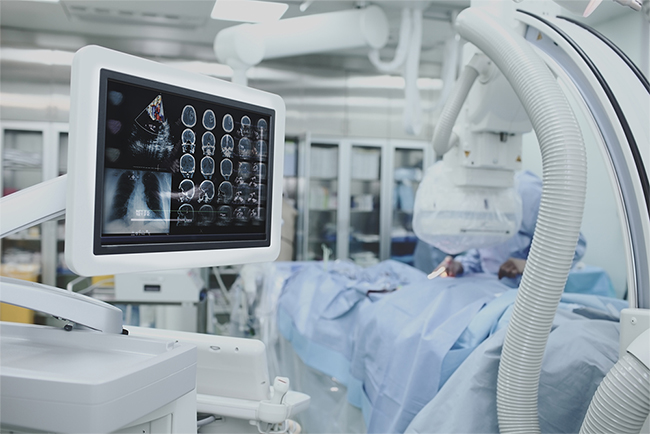Hello!
 What’s the first thing comes to your mind when you hear about cancer? Can you state”Passing? ” In case you did, you’re right. According to the World Health Organization report, 20 percent of men and 17 percent of guys develop cancer during their lifetime, and 12.5percent of men and 9 percent of females die from the illness. Cancer is the second top cause of death following a heart attack, killing over 500,000 individuals each year.
What’s the first thing comes to your mind when you hear about cancer? Can you state”Passing? ” In case you did, you’re right. According to the World Health Organization report, 20 percent of men and 17 percent of guys develop cancer during their lifetime, and 12.5percent of men and 9 percent of females die from the illness. Cancer is the second top cause of death following a heart attack, killing over 500,000 individuals each year.
Luckily, technology is here to change all that for good. We’ve seen artificial intelligence outsmarting disorders like influenza, but does it take on the likes of cancer. Many experts feel that it could. Within the following guide, you will find out how artificial intelligence and supercomputers can combine forces to conquer cancer. Keep Reading to Discover More.
1. Drug Design
 Prior to the advent of supercomputers, developing a new medication to cure a disease that is dangerous demands a substantial investment and a great deal of time. Up to now time happened the actual advantages of modern technologies on a disorder — never get to the patients. Together with supercomputers, researchers are now able to identify new medication and therapy quicker and without investment.
Prior to the advent of supercomputers, developing a new medication to cure a disease that is dangerous demands a substantial investment and a great deal of time. Up to now time happened the actual advantages of modern technologies on a disorder — never get to the patients. Together with supercomputers, researchers are now able to identify new medication and therapy quicker and without investment.
By way of instance, Shuxing Zhang of MD Anderson Cancer Center has used supercomputers to scan 1500 medication to ascertain which medications may inhibit TNIK. TNIK is an enzyme responsible for cell signaling in patients with colon cancer. The new technology enables rapid discovery of the ideal medication to heal harmful ailments.
2. Immunotherapy
Immunotherapy is a treatment which fosters the body’s natural defense mechanisms so that it may fight cancer. The issue with immunotherapy is the fact that it doesn’t operate on all cancer sufferers. It may work on a few but will not work on other people. Supercomputers helps researchers identify tumor reactions of immunotherapy and find out how different individual bodies respond to this therapy. Knowing the variables offers actionable clinical understanding from large and varied data sets.
 Clinical data gained from data collections means that investigators can utilize this information to come up with active clinical trials and may seriously analyze genetic data associated with resistant proteins. Consequently, we may see more successful cancer therapy , and more individuals are going to have the ability to conquer cancer.
Clinical data gained from data collections means that investigators can utilize this information to come up with active clinical trials and may seriously analyze genetic data associated with resistant proteins. Consequently, we may see more successful cancer therapy , and more individuals are going to have the ability to conquer cancer.
3. Surgery
Among the most popular treatment approaches for cancer is surgery, but occasionally surgery isn’t the safest. There might be several complications that could happen during and following operations. As an example, if a physician removes too little tumor, then there’s always a chance of relapse, which may damage the individual.
 Researchers in the University of Texas have used supercomputers to do laser therapy on a puppy tumor with no physician. Together with the amount of data and images we have now, surgeons and researchers can depend on surgical simulations. Scientists are attempting to replicate exactly the exact same thing with mobile systems. The afternoon when artificial physicians and surgeons can function patients is close. You never know you may see a robot perform the operation in a couple of decades.
Researchers in the University of Texas have used supercomputers to do laser therapy on a puppy tumor with no physician. Together with the amount of data and images we have now, surgeons and researchers can depend on surgical simulations. Scientists are attempting to replicate exactly the exact same thing with mobile systems. The afternoon when artificial physicians and surgeons can function patients is close. You never know you may see a robot perform the operation in a couple of decades.
4. Radiation and Proton Therapy
Another normal mode of cancer therapy would be X-Ray radiation, but it’s gradually being replaced by a brand new treatment method called proton treatment. In proton treatment, a ray of this proton is fired in the cancer cells to destroy them. The best thing about this therapy is that it doesn’t harm the surrounding cells. The utter precision of the treatment compels the apparatus to be absolutely calibrated, and the margin for error is practically non-existent. Researchers may also be using supercomputers to research new kinds of X-rays that unite real-time imaging and therapy to replicate proton treatment.
5. Cancer Diagnostics
 Most of us recognize that diagnosing cancer is step one. The quicker you diagnose the illness, the easier it is to heal. With the progress in medical sciences, new kinds of DNA tests and sensitive body scans have been developed, which will aid in quickly diagnosing the illness. Then you can find nanosensors implanted on your blood, which will inform about cells.
Most of us recognize that diagnosing cancer is step one. The quicker you diagnose the illness, the easier it is to heal. With the progress in medical sciences, new kinds of DNA tests and sensitive body scans have been developed, which will aid in quickly diagnosing the illness. Then you can find nanosensors implanted on your blood, which will inform about cells.
The issue with these new evaluations is the fact that it may be harmful to examine them on sufferers, therefore scientists are using supercomputers to make simulations that help them analyze the potency of the new evaluations.
Researchers have developed a new diagnostic apparatus they are calling as a nanopore. This system goes via a lean hole in the membrane and can be effective at DNA sequencing within the body. What’s more, it finds signals of cancers since DNA molecules pass through. Researchers are working on creating nanocarriers, which may be employed to catch the DNA molecule.
6. Genomics
 Just one human genome includes 3 billion base pairs. Three thousand is a huge amount to spot where a mutation can happen — it is practically impossible, manually. These two technologies are excellent at identifying patterns from massive data collections. When you mix that with all the energy of a supercomputer, you’ll have the ability to examine these countless pairs in minutes, not weeks. Speedy-pairing-analysis enables medical scientists to create more goal therapies that could remove the origins of cancer from the individual’s body. That isn’t all; supercomputers also have helped scientists identify cancer risk factors and determine how every cancer patient responds to various therapies.
Just one human genome includes 3 billion base pairs. Three thousand is a huge amount to spot where a mutation can happen — it is practically impossible, manually. These two technologies are excellent at identifying patterns from massive data collections. When you mix that with all the energy of a supercomputer, you’ll have the ability to examine these countless pairs in minutes, not weeks. Speedy-pairing-analysis enables medical scientists to create more goal therapies that could remove the origins of cancer from the individual’s body. That isn’t all; supercomputers also have helped scientists identify cancer risk factors and determine how every cancer patient responds to various therapies.
7. Patient-Specific Treatment
 Exactly like in program development, 1 size doesn’t fit all when it comes to cancer therapy. Every individual differs and will respond differently to various therapies. Researchers are divided regarding correct protocols to its approaches of cancer therapy. Some may use data mining methods while some would rather have a mathematical version. Thomas Yankeelov, head of Center of Computational Oncology, is in the latter camp.
Exactly like in program development, 1 size doesn’t fit all when it comes to cancer therapy. Every individual differs and will respond differently to various therapies. Researchers are divided regarding correct protocols to its approaches of cancer therapy. Some may use data mining methods while some would rather have a mathematical version. Thomas Yankeelov, head of Center of Computational Oncology, is in the latter camp.
Thomas Yankeelov Stated,
“when you’ve got a model that may recapitulate how tumors develop and react to treatment, then it turns into a timeless technology optimization issue. ‘I’ve this much medication and this time. What is the perfect way to give it to decrease the amount of tumor cells to the maximum period of time? “
Also read:
- Best Business Intelligence Software That is Best for Your Business
- Herbal Remedy for Seasonal Allergy
- The Benefits of Investing Time and Money in Advanced Car Wash Technology
Thank you!
Join us on social networks!
See you!






